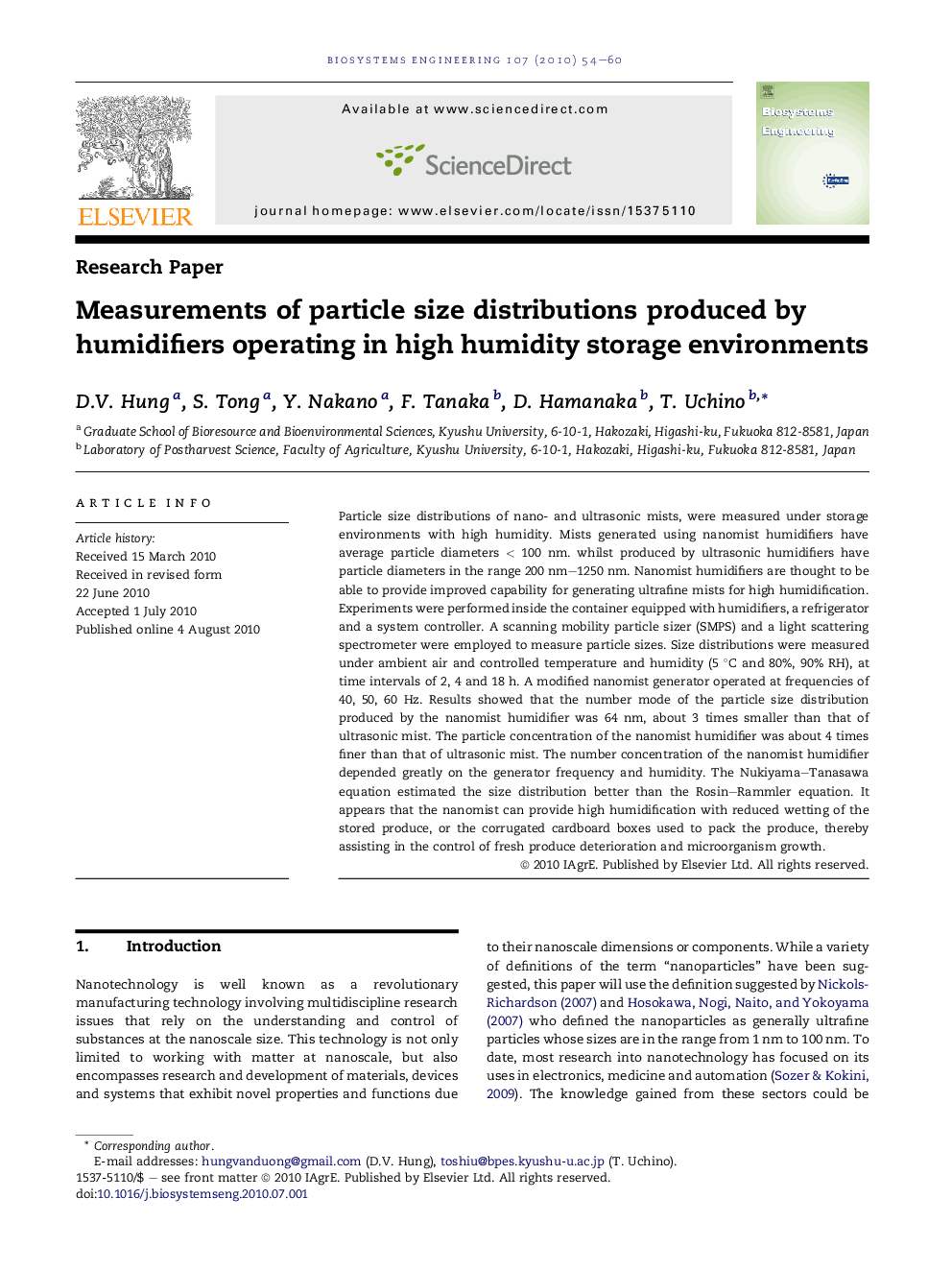| Article ID | Journal | Published Year | Pages | File Type |
|---|---|---|---|---|
| 1711745 | Biosystems Engineering | 2010 | 7 Pages |
Particle size distributions of nano- and ultrasonic mists, were measured under storage environments with high humidity. Mists generated using nanomist humidifiers have average particle diameters < 100 nm. whilst produced by ultrasonic humidifiers have particle diameters in the range 200 nm–1250 nm. Nanomist humidifiers are thought to be able to provide improved capability for generating ultrafine mists for high humidification. Experiments were performed inside the container equipped with humidifiers, a refrigerator and a system controller. A scanning mobility particle sizer (SMPS) and a light scattering spectrometer were employed to measure particle sizes. Size distributions were measured under ambient air and controlled temperature and humidity (5 °C and 80%, 90% RH), at time intervals of 2, 4 and 18 h. A modified nanomist generator operated at frequencies of 40, 50, 60 Hz. Results showed that the number mode of the particle size distribution produced by the nanomist humidifier was 64 nm, about 3 times smaller than that of ultrasonic mist. The particle concentration of the nanomist humidifier was about 4 times finer than that of ultrasonic mist. The number concentration of the nanomist humidifier depended greatly on the generator frequency and humidity. The Nukiyama–Tanasawa equation estimated the size distribution better than the Rosin–Rammler equation. It appears that the nanomist can provide high humidification with reduced wetting of the stored produce, or the corrugated cardboard boxes used to pack the produce, thereby assisting in the control of fresh produce deterioration and microorganism growth.
